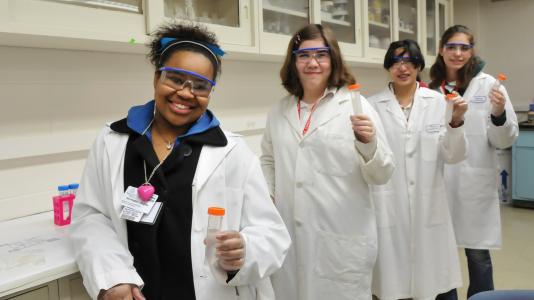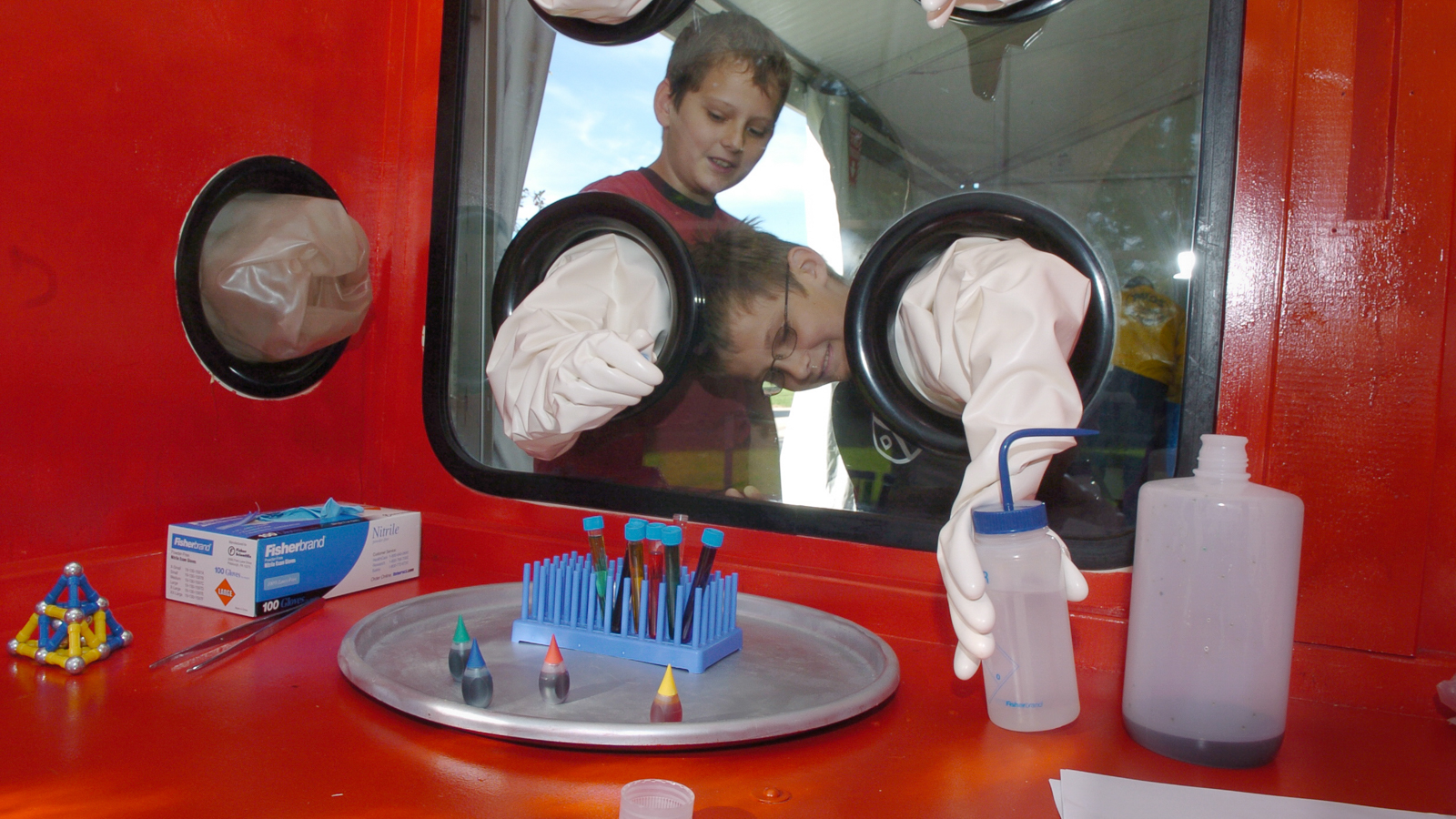
As a first step in the effort, May 12, 2010 has been declared the first ever National Lab Day, part of President Obama’s “Educate to Innovate” campaign. National Lab Day aims to inspire a wave of future innovators and foster U.S. competiveness by encouraging science, technology, engineering and mathematics (STEM) education in America.
At the U.S. Department of Energy’s (DOE) Argonne National Laboratory, every day is National Lab Day. As the nation’s first national lab and home to the DOE’s largest set of educational programs, Argonne has welcomed students of all ages since its inception in 1946. Each year, thousands of students visit the lab to participate in a wide range of scientific programs, providing a wealth of hands-on learning opportunities for students in basic and applied scientific research.
“Argonne is one of the best-equipped classrooms in the world,” said Eric Isaacs, Argonne’s director. “What better place to learn about the wonders of science where we have some of the best minds working to attack some of the world’s greatest challenges in energy, the environment and national security.”
National Lab Day is a nationwide initiative designed to reinvigorate science and math education by fostering ongoing collaborations and connecting teachers and students with their local scientists, engineers, mathematicians and industry professionals through exciting, hands-on, discovery-based learning experiences.
“Our mission is to inspire and educate our nation’s future scientists and engineers,” said Harold Myron, director of educational programs at Argonne. “National Lab Day is a great opportunity to generate awareness of the importance of STEM education and show kids how cool science can be.”
In the last year alone, more than 6,000 grade-school and high-school students participated in Argonne’s unique learning labs, which feature hands-on learning opportunities designed to spark curiosity and discovery while introducing students to careers in science and engineering.
“My students really enjoyed their field trip to Argonne—especially the workshops where they got to take part in science-based lab activities,” said Gretchen Anderson, a science teacher at Chicago’s McKinley Park Elementary School. “But the best part was after the field trip when Argonne employees came to talk with my students about how they overcame obstacles to get where they are today. My students needed to hear this. It made them see that pursuing a career in science is not just a dream, but a reality.”
Argonne’s instructional labs are open and available to all students, from private to public to home-schooled children, at no cost. These labs include engaging and interactive sessions on topics like the Science of Toys, Superconductivity, Sound Energy, Spectrophotometers, Forensics and Introduction to Chemistry, as well as the Energy Bike, which students pedal to convert mechanical energy into electricity.
“For many of my students, field trips are a luxury they cannot afford,” said Kevin Hooper, a science teacher at Officer Donald J. Marquez School, who visited the lab on consecutive days with his seventh and eighth grade students.
“However, Argonne offers students a rare opportunity to see science in action for free. After our visit, virtually all of the kids wanted to be the scientists behind the technology. It was great to see so much enthusiasm and to reinforce what we were learning in the classroom and how it applies in the real world.”
Another cool and exciting hands-on science event, Argonne’s Model Solar Car Competition includes both a design and race competition, and requires students to use applied science and engineering skills to meet technical challenges. The event is part of the National Science Bowl, a program sponsored by the DOE and conducted at more than 30 locations across the country where teams compete in a fast-paced “Jeopardy!” style head-to-head competition.
For high-school students, Argonne offers advanced labs and tours of its one-of-a-kind scientific user facilities, including the Advanced Photon Source (APS), which is home to some of the brightest X-rays in the world. At the APS, scientists and engineers investigate everything from proteins and new drug therapies to how the earth was formed to climate change.
“There is nothing like the hands-on experience in the lab to help teach science,” said Bob Thomas, a physics instructor at Mother McAuley, an all-girls Catholic high school in Evergreen Park. “The girls enjoy coming out to Argonne, and they respond especially well to some of the female role models. It makes it easier for them to see all the possibilities that exist and all of the different aspects of science and engineering.”
Thomas was familiar with Argonne’s educational programs because he participated in the DOE’s Academies Creating Teacher Scientists (ACTS) program, which was held at Argonne. This three-year program provides middle and high school math and science teachers with practical lab experience, as well as the opportunity to establish long-term relationships with scientists and teaching colleagues and to transfer their experiences in scientific research to the classroom.
Many of Argonne’s scientists and engineers also serve as teachers and mentors, encouraging students to expand their knowledge by going to visit classrooms or hosting special programs at the laboratory.
Recently, a group of fifth grade students from Lincoln Elementary School in Oak Park visited the APS to see X-ray science in action. Students were able to see the circulatory and respiratory systems at work of ants, worms, millipedes and butterflies. The group’s tour guide was Wah Keat Lee, an Argonne physicist, who has worked with the class since the start of the school year. Lee had visited the class twice to teach them about X-rays and insect physiology.
The opportunity was part of the Global Village scientist program through the Oak Park Education Foundation, which has been matching students with local scientists since 1990.
Dave Kupperman, assistant director of Argonne’s Division of Educational Programs, has been working with the Global Village program for the last 15 years. “It is a great way to reach out to students and get involved with the community,” Kupperman said. “I think I enjoy it as much as the children. They get very excited about science and love the various hands-on experiments we can bring to the classroom.”
